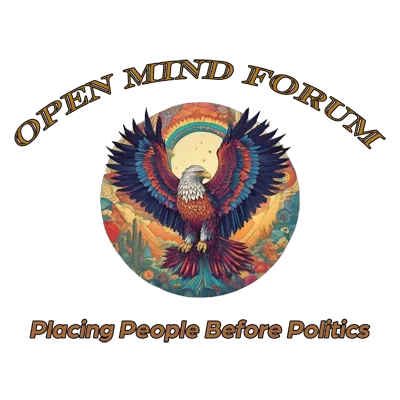Tracing the Journey of Biblical Criticism from Spinoza to Modernity
Introduction to Who Wrote the Bible
Who wrote the Bible? remains a profound question that has shaped centuries of theological and academic inquiry. While traditional doctrines have long taught that God authored the Bible, modern biblical criticism reveals a more complex narrative. This field examines the Bible’s language, style, and historical context, challenging the

longstanding belief in divine authorship. By analyzing the text’s multiple authors and influences, biblical criticism reshapes how we understand the Bible’s origins. Despite mounting evidence for diverse authorship, many people still view questioning God’s authorship as a threat to faith itself. This essay traces the history of biblical criticism, from its 17th-century roots with Baruch Spinoza to contemporary scholarship, and explores why people continue to uphold the idea of divine authorship as central to their beliefs.
Baruch Spinoza: The Father of Modern Biblical Criticism into Who Wrote the Bible?
Baruch Spinoza, a 17th-century Dutch philosopher, stands as a pioneering figure in modern biblical criticism. His groundbreaking work, Tractatus Theologico-Politicus (1670), challenged the conventional belief that God inspired every word of the Bible. Spinoza’s analysis suggested that the Bible was an amalgamation of texts, shaped by numerous writers influenced by their cultural and political contexts. By examining linguistic shifts and textual inconsistencies, Spinoza proposed that Moses likely did not write the entirety of the Torah—a notion radical for its time. For instance, Spinoza pointed to the third-person references to Moses within the text as evidence of a later editor.
Spinoza’s approach marked the beginning of a historical and critical approach to biblical texts, urging readers to consider the Bible as a human creation influenced by time-bound perspectives. Spinoza’s influence reached far beyond his era, paving the way for future scholars to ask, “Who wrote the Bible?” with intellectual rigor rather than unquestioned reverence.
19th-Century Scholars: Source Criticism and the Documentary Hypothesis
The 19th century saw the development of source criticism, a method that dissected the Bible into its component sources to better understand its evolution. One of the most influential theories to emerge from this period was the Documentary Hypothesis, proposed by German theologian Julius Wellhausen. This hypothesis identified four distinct sources within the first five books of the Hebrew Bible, labeled J (Yahwist), E (Elohist), P (Priestly), and D (Deuteronomist). Wellhausen suggested that each source stemmed from a particular historical and theological perspective, representing the religious and political interests of different groups.
The Yahwist source (J), for example, portrays a deeply personal God who engages directly with humanity, while the Priestly source (P) reflects the concerns of a priestly class focused on ritual purity and the institutional power of religious leaders. The Elohist source (E) uses more abstract language to describe God and may have originated in the northern kingdom of Israel, reflecting its distinct religious identity. The Deuteronomist source (D), which emphasizes law and covenant, likely originated during King Josiah’s reign, coinciding with a period of religious reform.
Wellhausen’s theory suggested that the Hebrew Bible evolved over centuries and reflected the social and religious evolution of the Israelite people. This scholarly approach added a new layer of complexity to the question, “Who wrote the Bible?” by revealing that different communities shaped it according to their unique cultural and theological needs.
Who wrote the Bible?: Archaeological Evidence and Historical Criticism
The emergence of archaeology in the 19th and 20th centuries equipped scholars with new methods to test the Bible’s historical claims. For example, scholars previously accepted the story of the conquest of Canaan as historical fact.

However, archaeological digs conducted in cities mentioned in the Book of Joshua found little evidence of a violent conquest; instead, findings suggested a gradual settlement of Canaan by various groups. This discovery supported the idea that the biblical narrative had been shaped to reflect theological rather than historical goals.
William Foxwell Albright, a prominent archaeologist and biblical scholar, sought to reconcile archaeological findings with biblical accounts, offering a more conservative response to critical scholarship. However, as further evidence contradicted the Exodus and Conquest narratives, historical criticism continued to challenge traditional views on authorship. The question “Who wrote the Bible?” became not just about identifying authors but about understanding the intentions and historical realities that shaped these texts.
Linguistic Criticism: Analyzing Language and Style
Linguistic criticism provides another powerful tool for understanding who wrote the Bible? by examining variations in language and style within the text. Scholars found that the Bible’s Hebrew shifts in tone, vocabulary, and syntax, signaling contributions from different periods and regions. For example, the language in the Psalms is often lyrical and poetic, a stylistic choice that contrasts with the legalistic tone of Leviticus. The Hebrew in the Song of Solomon displays a unique dialect, suggesting a different geographic or temporal origin.
These stylistic differences suggest that writers shaped the Bible to address specific communities with distinct needs. For instance, the prophetic books reflect a language intended for audiences under foreign domination, emphasizing moral resilience and divine justice. The Priestly sections, in contrast, are steeped in ritualistic detail, underscoring the importance of maintaining cultural identity through religious practices. Linguistic criticism thus reinforces the idea that the Bible’s authorship is diverse and culturally layered, presenting a narrative far removed from the notion of a single divine author.
Modern Scholarship and the Persistence of Belief in Divine Authorship: Who wrote the Bible?
Today, biblical scholarship employs advanced tools like literary criticism, redaction criticism, and sociological analysis to probe deeper into the question of “who wrote the Bible.” These methodologies have unveiled a tapestry of competing perspectives, often influenced by the socio-political needs of the time. Yet, despite the breadth of evidence suggesting multiple authors, many adherents of the Abrahamic faiths continue to affirm divine authorship.
The enduring belief in divine authorship, even among modern readers, reflects a complex interplay of tradition, psychology, and theological necessity. For many believers, the Bible’s authority rests on the notion that God wrote every word, making it a unique and irrefutable source of truth. Questioning this belief can destabilize one’s sense of purpose, morality, and identity. From a psychological perspective, the certainty provided by an authoritative, divinely authored text fulfills a deep-seated need for stability in an unpredictable world.
Moreover, many religious communities actively discourage questions that undermine the Bible’s divinity. This opposition to critical engagement, while often well-intentioned, can prevent believers from exploring the Bible’s human history and multiple layers of meaning. For some, the fear that acknowledging human authorship equates to dismantling the foundations of faith keeps them from engaging with the question of “who wrote the Bible.”
Pragmatic Relevance of Biblical Criticism
Understanding “who wrote the Bible” has profound implications for contemporary readers, allowing for a more nuanced and accessible interpretation of its teachings. By recognizing the Bible as a collection of human perspectives, modern readers can approach its messages with empathy, curiosity, and critical thinking. This perspective does not necessitate abandoning religious belief; rather, it can enhance one’s understanding by contextualizing biblical wisdom within the realities of human history.
Biblical criticism also offers common ground between religious and secular communities. When people see the Bible as a cultural and historical document, it opens up avenues for mutual respect and interfaith dialogue. Moreover, approaching the Bible critically allows individuals to identify enduring moral principles while acknowledging that some teachings reflect the limitations and biases of their authors.
Conclusion
From Spinoza’s early questions to today’s multi-disciplinary approaches, biblical criticism reveals a complex web of influences that shape the Bible. By dissecting the text’s linguistic, archaeological, and historical layers, scholars continue to challenge the traditional claim of a singular divine author. Although many believers find it unsettling to ask, “Who wrote the Bible?” this question invites a richer understanding of a text central to religious and cultural life. Embracing biblical criticism can deepen faith by grounding it in a broader historical context, transforming the Bible into a living document that speaks to the complexities of the human experience.
Sources Cited
– Spinoza, B. (1670). Tractatus Theologico-Politicus.
– Wellhausen, J. (1878). Prolegomena to the History of Israel.
– Albright, W. F. (1935). The Archaeology of Palestine.
– Friedman, R. E. (1987). Who Wrote the Bible?
– Kugel, J. L. (2007). How to Read the Bible.
– Collins, J. J. (2004). Introduction to the Hebrew Bible.
Suggestions for Further Reading
– Friedman, R. E. (1987). Who Wrote the Bible? – A thorough introduction to the Documentary Hypothesis, presenting evidence for multiple authors in the Torah.
– Kugel, J. L. (2007). How to Read the Bible. – Explores the Bible’s literary and historical complexities in an accessible format for general readers.
– Van Seters, J. (1992). Prologue to History: The Yahwist as Historian in Genesis. – Examines the Yahwist’s role in shaping the biblical narrative.
– Barton, J. (1998). The Oxford Bible Commentary. – An in-depth resource with insights from modern biblical scholarship.
– Collins, J. J. (2004). Introduction to the Hebrew Bible. – A historical and literary guide to the Hebrew Bible for students and general readers.
– Baden, J. (2012). The Composition of the Pentateuch: Renewing the Documentary Hypothesis. – Revisits Wellhausen’s Documentary Hypothesis with new insights and analyses.
– Alter, R. (2018). The Hebrew Bible: A Translation with Commentary. – Offers a fresh translation and commentary, capturing the text’s literary artistry.
– Wilson, R. R. (2009). The World around the Old Testament: The People and Places of the Ancient Near East. – Contextualizes the Hebrew Bible within its historical environment.
– Sanders, E. P. (2015). Paul: The Apostle’s Life, Letters, and Thought. – Although focused on the New Testament, it provides insight into the early Christian interpretation of Hebrew texts.
Disclaimer: The images and videos in this post are AI-generated creations, intended purely for illustrative and conceptual purposes. They are not real-life representations and should not be interpreted as such. Their sole purpose is to offer a visual means of exploring the topics discussed in this post.




